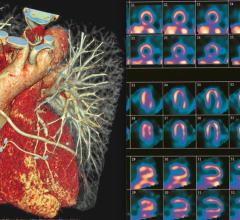September 10, 2014 — ResMed announced results from a study presented at the 2014 European Society of Cardiology (ESC) Congress in Barcelona, Spain, looking at the use of the at-home, contactless, bedside SleepMinder device to diagnose sleep-disordered breathing (SDB), the most common co-morbidity in patients with heart failure (HF). The study also assessed how SleepMinder, when used over two weeks, compared to a current gold standard of diagnosis, a single night assessment via inpatient polysomnography (PSG).
“Sleep-disordered breathing is the most common heart failure co-morbidity, yet the diagnosis is often missed,” said Martin Cowie, professor of cardiology at Royal Brompton Hospital in London and co-author of the study. “This condition affects millions of heart failure patients across Europe and can lead to significantly worse outcomes if not correctly diagnosed and treated. This study showed that, by using a device that can gather longer-term data, we can offer a means of diagnosis that is both practical for patients, doctors and health services and may well be more accurate than existing techniques that require inpatient care. It is vital that cardiologists explore how they can help to establish more routine use of this technology in the heart failure patient pathway.”
SDB is typically diagnosed in patients with HF by calculating the Apnoea-Hypopnea Index (AHI), typically from a single overnight PSG study conducted in a hospital or specialist sleep center. However, HF patients commonly experience volume load changes that can make AHI highly variable in this population over time. Mean AHI assessment, over a longer period is therefore likely to be more accurate.
SleepMinder is a non-contact, bedside, nocturnal respiratory monitor that can be placed next to a patient’s bed to collect data on SDB over longer periods. Two weeks represent a useful period for SDB assessment to be gathered. This study involved 39 adult patients with HF who were assessed over 12 months. Following two weeks of assessment, mean AHI was consistently above the treatment threshold for 57 percent of patients. This rose to 74 percent after 12 months of follow-up.
These results can have significant implications for the routine diagnosis of this prevalent condition in HF. SDB affects between 50-75 percent of the 15 million HF patients in Europe. However, it remains under-diagnosed and one of the least recognized co-morbidities by cardiologists, despite being linked to worse outcomes including mortality, hospitalizations and quality of life.
For more information: www.resmed.com


 January 23, 2024
January 23, 2024 








